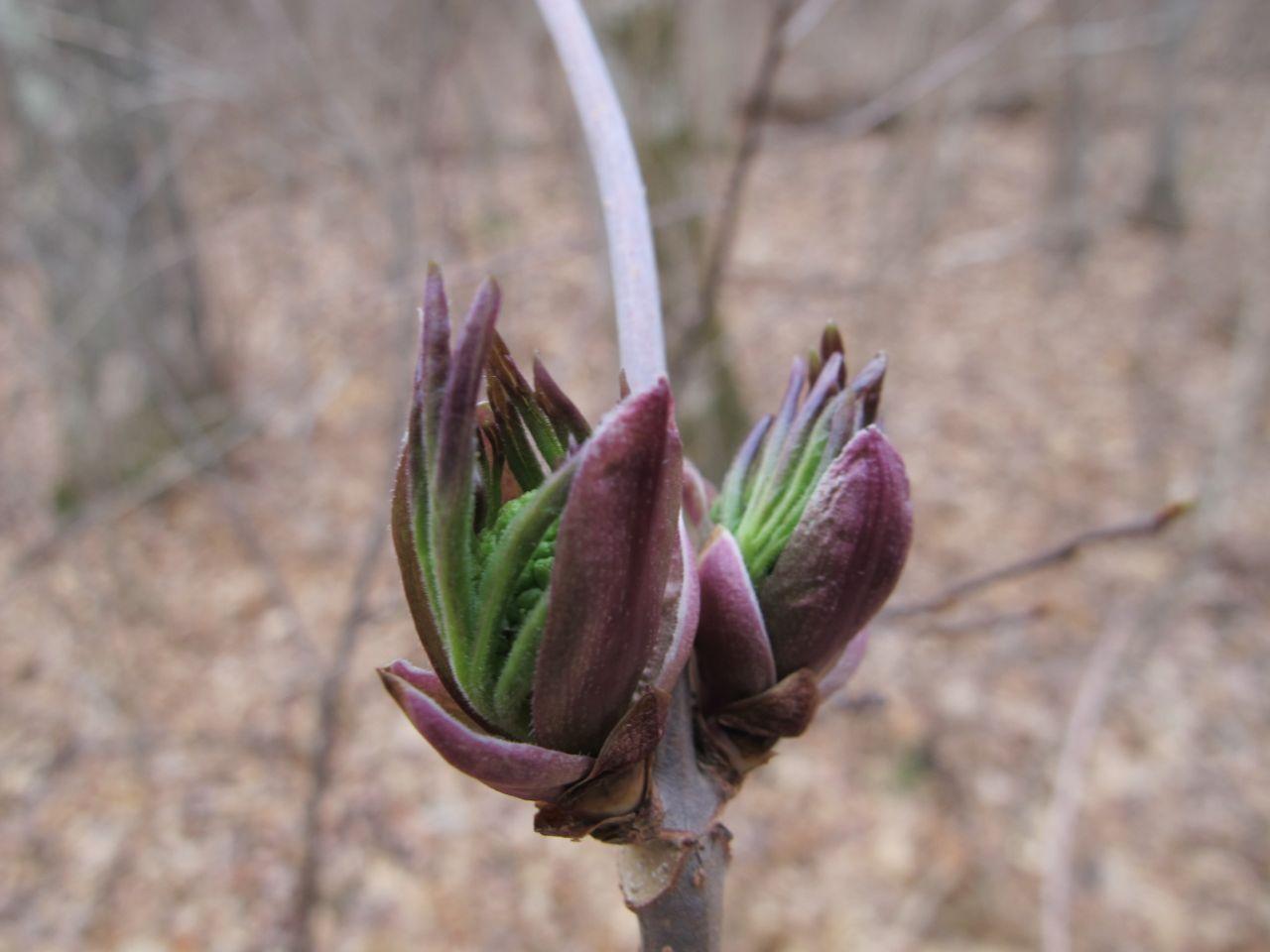Hey, bud!

Nature's smart. Lest our senses become overwhelmed with beauty if we were graced with the full palate of colors of the leaves, flowers, and birds all at once, spring starts slow, sending out hints of what's to come and allowing us to ease into and become accustomed to bright colors once again. Tree and shrubs, with access to water, swell their buds revealing the colors underneath the scales of armor that protect the life underneath during the harsh conditions of winter. Grasp a silver maple branch, yank it down and feast your eyes on the reds of the reproductive parts that have emerged.
A lot's going on to create those lovely colors. It might seem backwards for a tree to make flowers before leaves, as we're more familiar with the opposite sequence, but a good way to get your pollen dispersed, especially if you’re a tall plant, is to let the wind carry it. And a good time to do that is before leaves are out, as they could cause interference. Wind-pollinated flowers don’t need to be showy because they don’t need to attract insects or other animal pollinators so they don’t have petals. The other flower parts are often very pretty, however, just very small! Typically there are separate male and female flowers. The male flowers tend to be in long dangling catkins, while the female flowers may be little red stimas at the end of a bud. In some species (e.g. poplars), female flowers are also in catkins. In some species, such as hazelnut, the male catkin actually forms in the fall then opens in the spring.
Most trees in Minnesota are wind-pollinated and bloom in very early spring. In contrast, American basswood is one of the few bee-pollinated trees in Minnesota – it has fragrant flowers that bloom much later in the season, in July. Some of the small trees (cherries) and many shrubs are also bee-pollinated. Other species such as musclewood and bitternut hickory bloom in June but are wind-pollinated. It’s interesting to watch the progression of tree blooms and to figure out what stage of development things are at, which species blooms first, etc. The hard part is actually seeing the tree flowers, which are often located only on the uppermost branches! Chopping down a tree is typically frowned upon so unless you can find low-hanging branches, your best option may be a good pair of binoculars. Fortunately, there will be lots of wonderful birds to look at as well, to justify your purchase!